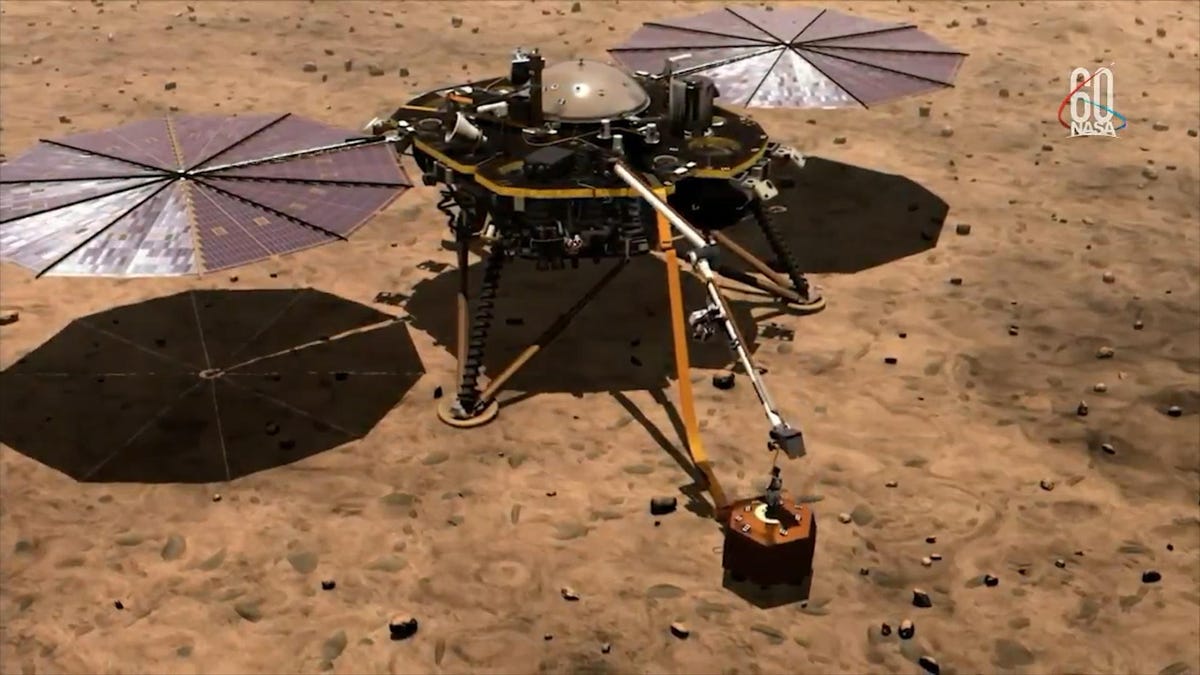NASA wowed with Mars landing, but InSight's just getting started
Following a dramatic touchdown Monday, a new robot on the red planet has unfurled its solar arrays and is ready to get down to business.

InSight will spend the next few months setting up its science lab on Mars.
Two days after landing on Mars, the NASA InSight lander is powered up, its solar arrays are working and it's already sending back selfies.
NASA pulled off its eighth landing of a spacecraft on the surface of the red planet as the world watched on Monday, but had to wait hours to learn if its power system was functioning.
"The InSight team can rest a little easier ... now that we know the spacecraft solar arrays are deployed and recharging the batteries," Tom Hoffman, InSight's project manager at NASA's Jet Propulsion Laboratory, said in a statement.
But flipping the switch is just the beginning.
There’s a quiet beauty here. Looking forward to exploring my new home. #MarsLanding pic.twitter.com/mfClzsfJJr
— NASAInSight (@NASAInSight) November 27, 2018
The first few things the InSight lander did after its hot and harrowing six-minute descent through the Martian atmosphere included snapping a dusty but still remarkable photo, then delivering a clear image of its landing site and beginning to unfurl its solar arrays.
The solar arrays will be critical to ensuring InSight can actually carry out its mission to explore the interior of Mars, listen for "Marsquakes" and figure out how many meteorites batter the red planet.
"With the arrays providing the energy we need to start the cool science operations, we are well on our way to thoroughly investigate what's inside of Mars for the very first time," Hoffman said following the landing.
The mission teams now will go over a checklist to make sure the lander, its on-board robotic arm and all its science instruments are in good health. The dust covers will come off its two cameras, clearing up the gritty view seen in InSight's first photo and allowing for a detailed survey of that red ground to determine the best place to set down the instruments.
Next, the robotic arm will position InSight's seismometer, called SEIS (Seismic Experiment for Interior Structure), and put a wind and thermal shield on top of it. With SEIS in place, next up will be the probes and "mole" that will dig as deep as 16 feet (4.9 meters) into the planet to measure internal temperature and to study Mars' guts.
Elizabeth Barrett, who heads InSight's instrument operations, told reporters Monday that the process of setting the instruments on the ground alone will take two to three months, followed by another month or two to drill and begin getting science data back.
When it all comes together, the science portion of the mission could begin in March 2019.
"Landing was thrilling, but I'm looking forward to the drilling," InSight principal investigator Bruce Banerdt said in a statement.
Once InSight's instruments are set up, they could return data for quite some time.
"We should be listening for Marsquakes for at least two years, and we hope considerably longer," Tom Pike of Imperial College London, who was part of the team that designed the seismometer, said in a statement.
Banerdt says the broader goal of InSight is to better understand not just Mars, but Earth and other planets. While evidence from the early years after Earth's formation has been erased by processes like weather and plate tectonics, those processes seem to be less active on Mars.
"On Mars, all those things that were formed [early] are still frozen in place," Banerdt said during Monday's press conference.
Unlike its rover cousins, InSight will be stuck in place, but it stands to be very active in shaping our understanding of Mars and the rest of the universe. Stay tuned.
Originally published Nov. 26 at 4:15 p.m. PT.
Update, Nov. 27 at 6:56 a.m. PT: Adds NASA confirmation that solar panels are open and operating.
Update, Nov. 28, 12:18 p.m. PT: Adds a second quote from Tom Hoffman.
NASA turns 60: The space agency has taken humanity farther than anyone else, and it has plans to go further.
CNET's Holiday Gift Guide: The place to find the best tech gifts for 2018.

